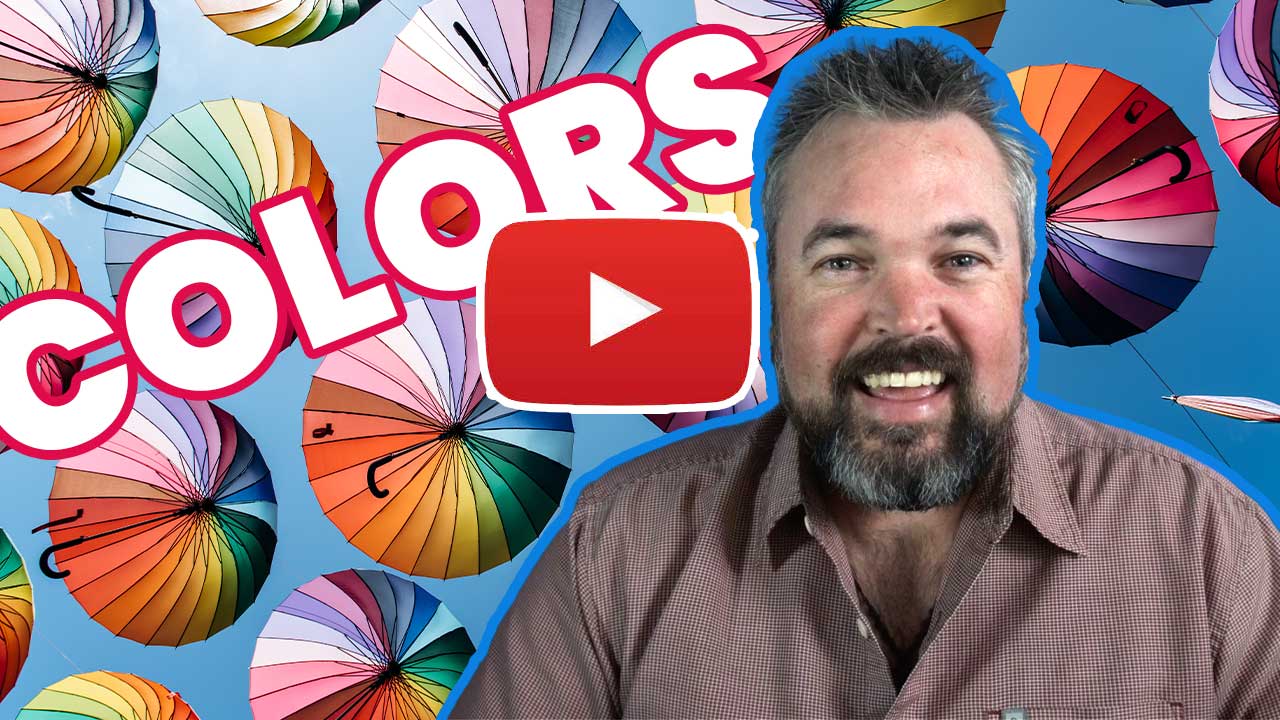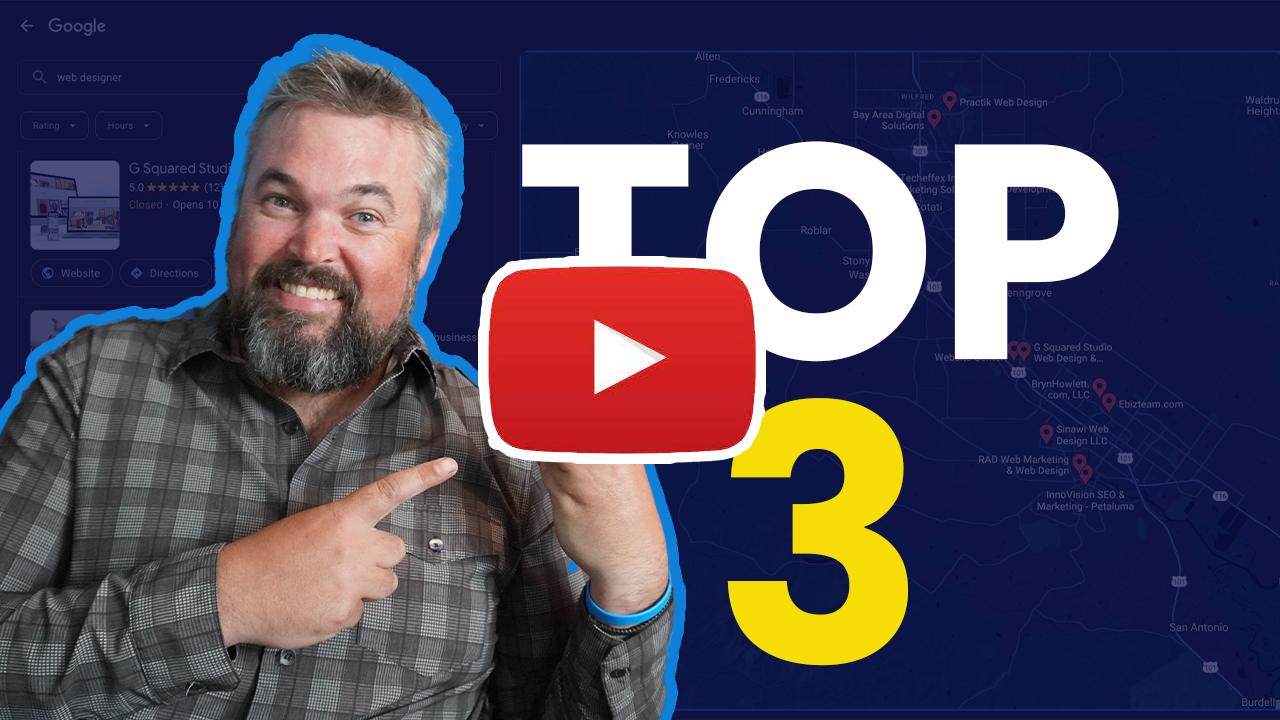
Picking Fonts in 10 minutes: A Quick Guide for Small Business Owners!
January 25, 2024
Behind the Scenes of Building a YouTube Channel for Business Growth
February 8, 2024Dive deeper: https://visme.co/blog/color-psychology-in-marketing-the-ultimate-guide/
Google Color Picker: http://tinyurl.com/33d6eyx2
Coolors Pallet Picker: https://coolors.co/
Hey there, fellow entrepreneur. I understand how overwhelming it could be to try and pick colors for your business, but I got your back today with this quick, simple video. Hi there. I'm Garik Goodell, owner of G Squared Studio, where I help small businesses grow using the internet and we make sure we focus on momentum over perfection. So today we're going to talk about color. It's such an important element for your business and I understand how overwhelming it can be. I'm going to give you the basics of color theory and the right tools to help you quickly get moving forward on picking the right colors for your business.
So first, let's talk about how you use color for your business. First, you should have a primary color. This color will be the main color that gets used in your logo and throughout most of your brandy material. This is the color that should mainly convey what it is you want, the color associated with your business to convey to your clients and potential clients. But as on top of that, you should also have a secondary color or maybe a few secondary colors. This can be really helpful for your business to have that secondary color so you can help draw the eye to certain things as well as just create a more visually interesting piece of marketing. Let's dive into what emotions and connotations people have with certain colors. I'm going to run through these pretty quick, so you just get a quick base knowledge, but I got these images from vme.
I'll have the link down in the description if you want to dive deeper into color theory. So yellow here. Yellow is optimism, confidence, self-esteem, friendliness. It's a joyful color. Red is typically associated with power and security and speed and courage, but can also be passion and some other elements and danger. We all know the red light is red for a reason as well as the stop sign. So you want to be careful and conscious of that when you do choose red, blue is associated with trust, intelligence, security, calm, but can also feel a little cold. So you want to be aware of that too if you're choosing a blue color. Orange is a color that's typically associated with comfort, playfulness, and warmth, and can be a really fun color to use Green here. Green is fresh. Eco-friendly nature, peaceful violet here or purple can be associated with spiritual healing, royalty creativity.
Here we have pink. Pink is typically associated with warmth, happiness, comfort, and a little bit of love. Don't forget about white, even though it is simple, it can be a really powerful color to use for your business. And since it is simple, it conveys simplicity and cleanliness and clarity and purity. On the other end of the spectrum, we have black. Black is elegance, wealth, sophistication, and glamor. We can muddy up it a bit with some brown. Brown conveys warmth, seriousness, earthiness, reliability. We can use metallics as well. Metallics can be a little challenging when you're actually conveying them sometimes in print form or online, but they create a great essence of glamor, elegance, legacy, and sophistication. So now you know some basics about color, emotion theory. So think about your business and what emotions you want people to feel or have your brand convey to them when they first come across your logo or your branding.
That's a great place to start on starting to pick your colors. Now let's look at the tools that really simplify this process so you can lock in that primary color and easily choose those secondary colors. Let's get on the computer. Okay, so now we're on the computer and I'm going to show you my two favorite tools that really simplify the process for you to pick your primary color and your secondary colors or color. So the easiest thing to do on Google is just search. Pick a color, boom. Here we go. It brings up this beautiful, highly functional, super simple color picker. So it shows you your main color here in the swatch area there, and you have the slider so you can slide left, go more towards green, then keeps going towards yellow, then all the way to red, and of course you can go the other way, blue into purple, into a pink, and then of course into red.
And what's really nice about this, let's say we want to pick a blue. Now that we're in this blue, we can easily move this around and let's go with a blue that's more gray. We can go with a darker blue, we can go with a much lighter blue. It just gives us all the flexibility to click around until we can find a color that really speaks to us. I'm actually really liking this muted blue that I just came across. It feels very professional, a little bit of elegance to it, a little bit darker, has a little bit more of a gray tone. Now that I've selected this, all you got to do is click this copy right here and it copies the hex key. The hex key is the code that locks in your color on all platforms. It can be a little bit different when it comes to print, but we're sticking to digital media for now.
So once you have that hex key, you jump over to the next tool, which is a great tool called Kors. I think that's how you say it. Let's pause for just a moment on here. Let's pretend you couldn't find a color, you couldn't find something that spoke to you on here. There's a great tool. Click the explore area or that larger screen and it brings up all these trending color palettes, and this can show you how different colors can work together and can really help you jump in to finding a full color palette that works for you. So this goes on forever. I don't think I've ever got to the bottom. You can just keep scrolling and scrolling and scrolling and scrolling. So this is a really nice tool. This gives you a full pallets to look at and can help you get the ball rolling if you just can't pick that single color right off the bat.
But let's go back and say you did pick that color. Click on more of this laptop screen where it says Make a palette. Then it will bring up this color palette for you. Click over the hex key paste in your blue or whatever color it is, and then click this lock icon that will lock this in. So I'm not in love with the rest of this, and all I have to do to change it up is hit space bar. I hit space bar and it gives me another color palette option. Still not speaking to me. Hit it again, still not really speaking to me. Hit it again. I'm kind of liking this gray as a secondary option and I'm really liking this green as a secondary option. So I'm going to lock both those in. Hit Spacebar again, mix it up a little bit. Now personally, what I'm looking for is something bright and vibrant that I can use for call to action buttons on the website.
So let me see here. That's a little too much. Ooh, that's way too much. Ooh, I like that orange. That's not going to be used a lot on my website, but it'll be used minimally and I don't know if I even need a fourth color, but let's see what else it comes with. Maybe if it pops up with another blue I can use. Ooh, actually, I really like that. That could be a really nice accent element to use on the site as well. There you go. Now I have created a color palette that is designed to work well with each other. So I hope you found these two tools helpful and I will have links to both of them down in the description. Thank you so much for watching this. I hope you got great value from this. If you want more videos like this where I'm helping small businesses quickly navigate some challenging things when it comes to marketing, please subscribe and I hope you have a great day and great success.




